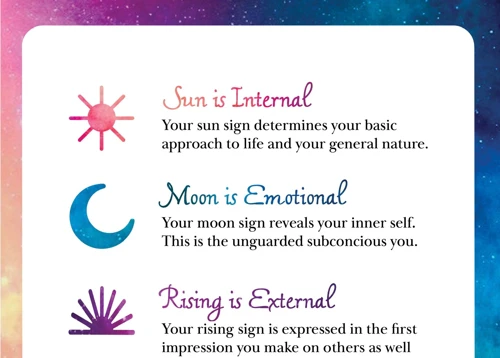Astrology has long been regarded as a fascinating tool for understanding human behavior and predicting future events. One of the key elements of astrology lies in analyzing the Sun, Moon, and Rising signs of a person’s zodiac chart. These signs provide valuable insights into an individual’s personality traits, emotional tendencies, and outward appearance. By examining the characteristics and influences of these signs, we can gain a deeper understanding of ourselves and others around us. In this article, we will delve into the intricacies of analyzing the Sun, Moon, and Rising signs step by step, uncovering the hidden depths of our astrological makeup. So, let’s embark on this cosmic journey and unlock the secrets written in the stars.
Contents
- The Basics of Astrology
- Analyzing the Sun Sign
- Understanding the Moon Sign
- Exploring the Rising Sign
- Comparing the Sun, Moon, and Rising Signs
- Conclusion
-
Frequently Asked Questions
- 1. What is the significance of the Sun, Moon, and Rising signs in astrology?
- 2. How is the Sun sign determined?
- 3. What does the Moon sign represent?
- 4. How does the Rising sign influence our outward appearance?
- 5. Do the Sun, Moon, and Rising signs have equal importance?
- 6. Can the Sun, Moon, and Rising signs be different?
- 7. How do the signs interact with each other in a natal chart?
- 8. Can the Sun, Moon, and Rising signs change over time?
- 9. How can understanding the Sun, Moon, and Rising signs enhance self-awareness?
- 10. Can astrology accurately predict future events?
- References
-
Frequently Asked Questions
- 1. What is the significance of the Sun, Moon, and Rising signs in astrology?
- 2. How do the Sun, Moon, and Rising signs differ from each other?
- 3. Can someone have different Zodiac signs for their Sun, Moon, and Rising signs?
- 4. How can I determine my Sun, Moon, and Rising signs?
- 5. What are some common traits associated with each Sun sign?
- 6. How does the Moon sign affect a person’s emotions?
- 7. Can the Rising sign mask or alter the traits of the Sun and Moon signs?
- 8. How do the Sun, Moon, and Rising signs work together?
- 9. Are there any dominant signs among the Sun, Moon, and Rising signs?
- 10. How can understanding the Sun, Moon, and Rising signs improve relationships?
- References
- Read More
The Basics of Astrology
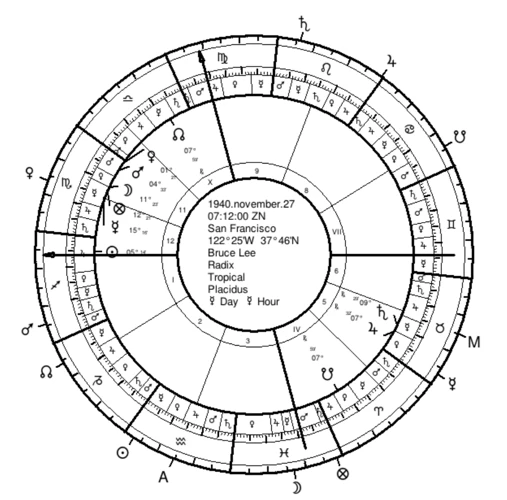
Astrology is an ancient practice that seeks to understand the influence of celestial bodies on human lives and events on Earth. It operates based on the belief that the positions and movements of the planets, Sun, and Moon at the time of a person’s birth can offer valuable insights into their personality traits, relationships, and future endeavors. In astrology, there are 12 zodiac signs, each representing different characteristics and elements. The three most important components of a person’s astrological profile are the Sun, Moon, and Rising signs. The Sun sign represents an individual’s core essence and is determined by the position of the Sun at the time of their birth. The Moon sign signifies emotions, instincts, and inner self, while the Rising sign (also known as the Ascendant) reflects one’s outward appearance and the first impression they make on others. These three signs are crucial in understanding an individual’s astrological makeup, and their interpretation plays a significant role in natal chart analysis. By analyzing the Sun, Moon, and Rising signs, astrologers can provide insights into various aspects of a person’s life, such as relationships, career choices, and personal growth. It is important to note that astrology is a complex discipline with various intricacies, and a comprehensive analysis considers the positions of other planets and aspects between them as well. So, let’s dive deeper into the intricacies of the Sun, Moon, and Rising signs to unlock the hidden wisdom of the cosmos.
1. What are the Sun, Moon, and Rising Signs?
The Sun, Moon, and Rising signs are fundamental components of an individual’s astrological profile. Let’s dive deeper into understanding each of these signs:
Sun Sign: The Sun sign, also known as the zodiac sign, represents the core essence of an individual’s personality. It is determined by the position of the Sun at the time of their birth. There are 12 zodiac signs, each associated with specific personality traits and characteristics. For example, Aries individuals are known for their fiery and assertive nature, while Taurus individuals are often seen as practical and reliable. The Sun sign indicates an individual’s ego, basic identity, and the qualities they project to the world.
Moon Sign: The Moon sign reflects a person’s emotions, instincts, and their innermost self. It represents the way individuals respond emotionally and how they experience and express their feelings. Determined by the position of the Moon at the time of birth, the Moon sign influences an individual’s emotional needs, moods, and reactions. For example, someone with a Moon in Cancer may be nurturing and sensitive, while someone with a Moon in Leo might have a strong need for recognition and validation.
Rising Sign: The Rising sign, also known as the Ascendant, represents the zodiac sign that was rising on the eastern horizon at the time of birth. It signifies an individual’s outward appearance, physical characteristics, and the first impression they make on others. The Rising sign highlights how an individual presents themselves to the world and the qualities they project externally. For example, someone with a Leo Rising sign may have a charismatic and confident presence, while someone with a Virgo Rising sign may appear reserved and detail-oriented.
Understanding the significance of the Sun, Moon, and Rising signs is crucial in interpreting a person’s astrological chart and gaining insights into their personality, behavior, and life path. These signs work together to create a multi-dimensional picture of an individual’s astrological makeup. By analyzing the interplay between these signs and other planetary influences, astrologers can provide valuable guidance on various aspects of life, such as relationships, career choices, and personal growth. So, let’s continue exploring the intricacies of astrological analysis to unlock the mysteries written in the stars.
2. Importance of Sun, Moon, and Rising Signs
The Sun, Moon, and Rising signs hold immense importance in astrology as they provide valuable insights into an individual’s personality and life experiences. The Sun sign represents the core essence and fundamental qualities of a person. It reflects their ego, identity, and the basic motivation that drives them. By understanding the Sun sign, we can gain a deeper understanding of an individual’s inherent strengths, talents, and natural inclinations. The Moon sign plays a crucial role in understanding a person’s emotional tendencies, instincts, and inner world. It reveals how individuals process emotions, their needs for security and comfort, and their approach to nurturing and caring for others. The Rising sign influences our appearance, behavior, and the first impression we make on others. It represents the mask we wear when we interact with the world and how we approach new experiences. By analyzing the Rising sign, we can gain insights into an individual’s overall demeanor, style of self-expression, and the image they project to others. Understanding the influence of these three signs allows astrologers to provide comprehensive and accurate interpretations of a person’s astrological chart, enabling individuals to gain self-awareness, make informed decisions, and align their life choices with their true nature. So, by examining the Sun, Moon, and Rising signs, we can unlock the secrets of our cosmic blueprint and navigate life’s journey with clarity and purpose. To learn more about the relationship between astrology and career choices, you can check our article on zodiac signs and career.
Analyzing the Sun Sign
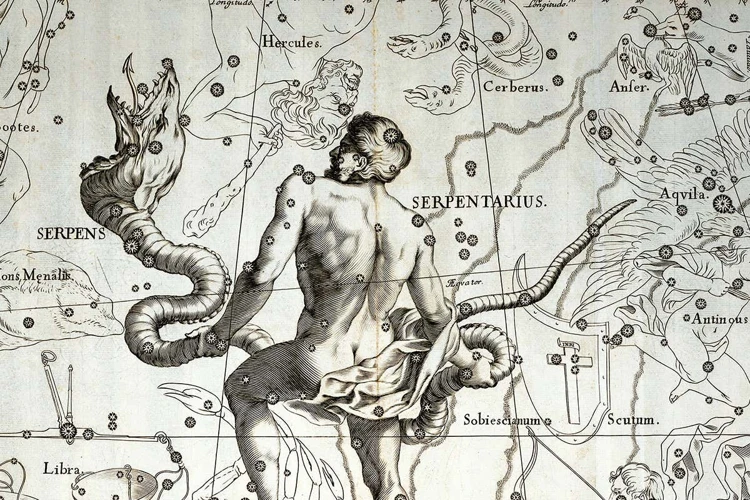
Analyzing the Sun sign is a fundamental aspect of astrology that provides valuable insights into an individual’s personality traits and core essence. Each zodiac sign is associated with specific characteristics and attributes that define how a person expresses themselves and interacts with the world around them. Understanding the traits of each Sun sign can help us gain a deeper understanding of ourselves and others. For example, Aries individuals are known for their assertiveness, courage, and competitive nature, while Taurus individuals are often characterized by their determination, practicality, and love for the finer things in life. Gemini individuals are known for their intellectual curiosity, versatility, and sociability, while Cancer individuals are often characterized as nurturing, empathetic, and sensitive. Each sign has its unique qualities and influences, and analyzing the Sun sign can provide valuable insights into an individual’s strengths, weaknesses, and life path. Astrologers often consider the placement of the Sun within a person’s natal chart, as well as any aspects it forms with other planets, to provide a more comprehensive analysis. By understanding the Sun sign, we can gain a deeper understanding of our own motivations, desires, and how we can best navigate the world around us. So, whether you are an ambitious Leo, a diplomatic Libra, or a mysterious Scorpio, delving into the intricacies of your Sun sign can uncover a wealth of self-awareness and personal growth. To learn more about the compatibility between different Sun signs, you can check out our article on Virgo-Pisces compatibility.
1. Characteristics and Traits of Sun Signs
Each zodiac sign has its unique characteristics and traits associated with it, which are influenced by the position of the Sun in the individual’s birth chart. A person’s Sun sign reflects their core personality and represents their ego, identity, and fundamental character. The twelve zodiac signs possess distinct qualities that shape individuals in different ways. For example, Virgo is known for its meticulousness, intelligence, and practicality. People born under this sign are often detail-oriented, analytical, and organized. In contrast, Pisces individuals are renowned for their creativity, intuition, and compassionate nature. They are often dreamy, empathetic, and possess strong artistic skills. Each zodiac sign has both positive and negative traits, influencing how a person interacts with the world and expresses themselves. Understanding the characteristics of each Sun sign can provide valuable insights into an individual’s motivations, preferences, and behavior patterns. It is important to note that while the Sun sign represents a significant aspect of one’s personality, it is not the only factor in astrological analysis. The positions of other planets in the birth chart and their interactions also contribute to the overall makeup of an individual’s astrological profile. So, let’s delve deeper into the characteristics and traits of each Sun sign to gain a better understanding of ourselves and others.
2. Influence of Sun Sign in Natal Chart Interpretation
In the realm of astrology, the influence of the Sun sign in natal chart interpretation cannot be overstated. The Sun represents the core essence of an individual, their unique identity, and the fundamental characteristics that shape their personality. When analyzing a natal chart, astrologers carefully examine the placement of the Sun in a specific zodiac sign. Each sign possesses its own distinct qualities, ruling elements, and planetary influences that color the expression of the Sun sign. For example, someone born with the Sun in fiery Aries may exhibit qualities of assertiveness, ambition, and a pioneering spirit. On the other hand, an individual with the Sun in nurturing Cancer may display traits such as sensitivity, emotional depth, and a strong connection to the home and family. The Sun sign acts as a guiding force, providing insights into an individual’s aspirations, motivations, and sense of purpose in life. It highlights their natural talents, potential areas of growth, and the overall path they are destined to walk. Additionally, the placement of the Sun sign in different houses of the natal chart further refines its influence and reveals specific areas of life where its energy is most prominently expressed. It is important to note that the Sun sign alone does not provide a complete picture of an individual’s astrological makeup, and a comprehensive interpretation takes into account the interplay between the Sun, Moon, Rising, and other planetary placements in the natal chart. By understanding the unique influence of the Sun sign, we can gain valuable insights into our own personal journey and navigate life’s challenges with clarity and purpose. So, let’s continue to explore the depths of astrology and unlock the wisdom it holds.
Understanding the Moon Sign
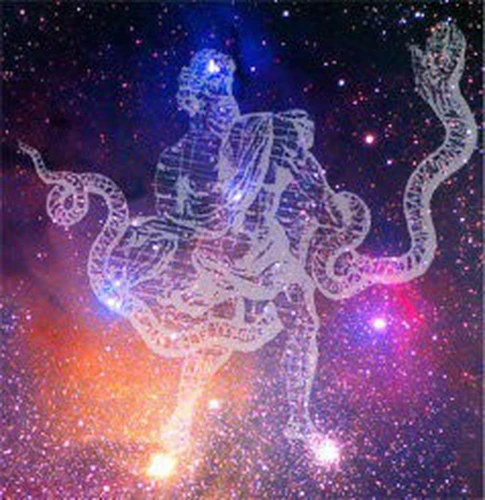
Understanding the Moon sign is a crucial aspect of astrology as it provides insights into an individual’s emotional nature, instincts, and inner self. The Moon represents the subconscious mind and governs our deepest emotions and reactions. It influences our moods, desires, and how we instinctively respond to different situations. An individual’s moon sign is determined by the position of the Moon at the time of their birth. Each zodiac sign has a unique set of characteristics, and when the Moon is in a specific sign, it imbues the individual with the qualities associated with that sign. For example, a person with a Moon in Leo may exhibit traits such as charisma, creativity, and a strong desire for recognition and affection. On the other hand, an individual with a Moon in Scorpio may possess intense emotions, a deep sense of intuition, and a penchant for secrecy. To interpret the Moon sign accurately, astrologers consider the aspects formed between the Moon and other planets, as well as its house placement in the natal chart. These factors provide further nuances and insights into an individual’s emotional landscape and can help shed light on their needs, desires, and preferred methods of expression. By understanding the Moon sign, individuals can gain a deeper understanding of their emotional patterns and how they can navigate their inner world more effectively. So, delve into the captivating world of the Moon sign and unravel the mysteries hidden within the depths of your soul.
1. Significance of the Moon in Astrology
The Moon holds immense significance in astrology, as it represents our emotions, instincts, and subconscious mind. It influences our moods, reactions, and how we process our feelings. The Moon sign in an individual’s birth chart reveals their emotional needs, nurturing tendencies, and how they express themselves on an emotional level. The Moon’s placement in a particular zodiac sign can greatly affect someone’s temperament and responses to different situations. For example, a person with their Moon in Pisces may be deeply empathetic and intuitive, while someone with their Moon in Virgo may have a practical and analytical approach to their emotions. The Moon also governs our relationships with our mother figures and our perception of home and family. Its phases, such as the Full Moon and New Moon, can evoke powerful energies and emotions within us, influencing our behavior and decision-making. Studying the Moon sign in an individual’s birth chart provides valuable insights into their emotional patterns, needs for security, and how they instinctively respond to the world around them. By understanding the significance of the Moon in astrology, we can gain a deeper understanding of ourselves and navigate our emotional landscape with greater self-awareness and compassion.
2. Interpreting the Moon Sign of an Individual
Interpreting the Moon sign of an individual offers valuable insights into their emotional nature, instincts, and innermost desires. The Moon in astrology is associated with our subconscious mind, reflecting our deepest needs and emotions. It represents our maternal instincts, nurturing qualities, and the way we seek emotional security. To interpret the Moon sign, it is crucial to consider the zodiac sign in which the Moon was located at the time of birth. Each zodiac sign offers unique qualities and characteristics that influence how an individual expresses their emotions and seeks emotional fulfillment. For example, someone born with their Moon in Virgo may be detail-oriented, practical, and strive for perfection in their emotional experiences. They might seek emotional security through taking care of themselves and others, finding comfort in routines, and having a sense of order. On the other hand, an individual with their Moon in Pisces may be highly imaginative, empathetic, and deeply intuitive. They may find emotional security through artistic expression, spirituality, and connecting with others on a soulful level. Understanding the Moon sign allows us to gain insights into how an individual experiences and processes their emotions, as well as their innate emotional needs. It helps explain their behaviors and reactions in intimate relationships and offers valuable guidance on nurturing their emotional well-being. By analyzing the Moon sign, astrologers can provide individuals with a deeper understanding of their emotional selves and how they can navigate the complexities of life with greater self-awareness and fulfillment.
Exploring the Rising Sign
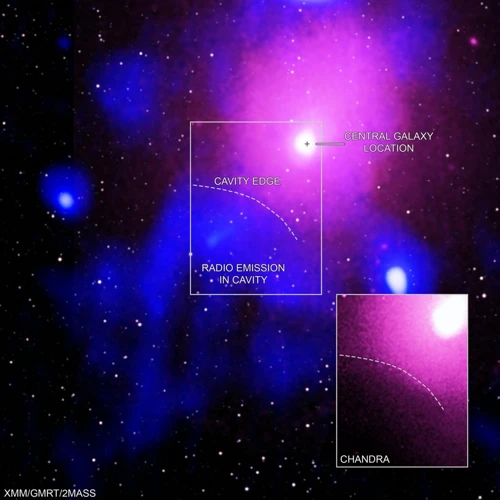
The Rising sign, also known as the Ascendant, is a crucial component in understanding an individual’s astrological profile. It represents the sign that was rising on the eastern horizon at the time of their birth and plays a significant role in shaping their outward appearance, demeanor, and first impression on others. The Rising sign acts as a filter through which the world sees us, and it influences our behavior and the way we interact with the world around us. To explore the Rising sign, astrologers analyze its placement in the zodiac and its aspects with other planets. Just like the Sun and Moon signs, the Rising sign contributes to our overall astrological makeup and has significant implications for how we present ourselves to the world. For example, a person with a Leo Rising sign may have a charismatic and confident demeanor, while someone with a Virgo Rising sign may appear more reserved and analytical. It is important to note that the Rising sign can sometimes contradict or modify the traits of the Sun and Moon signs, adding complexity to an individual’s astrological profile. Understanding the impact of the Rising sign can provide valuable insights into how others perceive us and the influences that shape our outward personality. So, delve into the depths of your Rising sign and discover the hidden facets of your astrological identity.
1. What is the Rising Sign?
The Rising sign, also known as the Ascendant, is a crucial component in astrology that represents the sign that was rising on the eastern horizon at the time of a person’s birth. It is determined by the exact moment and location of their birth, playing a significant role in shaping their outward appearance and how they present themselves to the world. The Rising sign acts as a filter through which the individual’s inner self, represented by the Sun and Moon signs, is projected onto the outside world. It reflects the first impression that others have of a person and can influence their physical appearance, demeanor, and overall approach to life. The Rising sign governs the individual’s personal style, mannerisms, and behavior in social situations. It is an essential factor in understanding an individual’s astrological profile and is often seen as the mask they wear to navigate through life. For example, someone with a Leo Rising sign may exude confidence and charisma, while a person with a Cancer Rising sign may appear nurturing and protective. The Rising sign provides valuable insights into an individual’s outer persona and the energy they emit to the world around them. By analyzing the Rising sign, astrologers can gain a deeper understanding of how an individual interacts with others and navigates through life’s challenges and opportunities. It is important to note that the Rising sign can also influence other areas of life, such as career choices, relationships, and overall life path. Understanding the significance of the Rising sign is key to unraveling the complexities of an individual’s astrological makeup and gaining a holistic understanding of their personality and life journey. So, dive deeper into the secrets of the Rising sign to discover the unique energy that shapes your outward expression and impacts your interactions with the world.
2. Analyzing the Impact of Rising Signs
Analyzing the impact of Rising signs is crucial in understanding an individual’s outward appearance, first impressions, and overall personality projection. The Rising sign, also known as the Ascendant, is determined by the zodiac sign that was on the eastern horizon at the moment of birth. It represents the mask we wear when interacting with the world and how we come across to others. The Rising sign is often seen as the external cover of the natal chart, determining physical attributes, mannerisms, and behavior. It is what others perceive of us before getting to know us on a deeper level. The Rising sign also plays a vital role in indicating the individual’s approach to life and the energy they radiate. For example, a person with an Aries Rising sign may come across as confident, assertive, and energetic, whereas someone with a Pisces Rising sign may exhibit a more dreamy, sensitive, and compassionate demeanor. The Rising sign sets the stage for how others perceive us, making it an essential component to consider when analyzing a person’s overall astrological makeup. It should be examined in conjunction with the Sun and Moon signs to provide a comprehensive understanding of an individual’s astrological profile. So, the Rising sign influences not only our physical appearance but also our behavior and the impression we make on others. It is a fascinating component that adds depth to the study of astrology. To delve even further into the realm of cosmic possibilities, check out our article on black holes and time travel.
Comparing the Sun, Moon, and Rising Signs
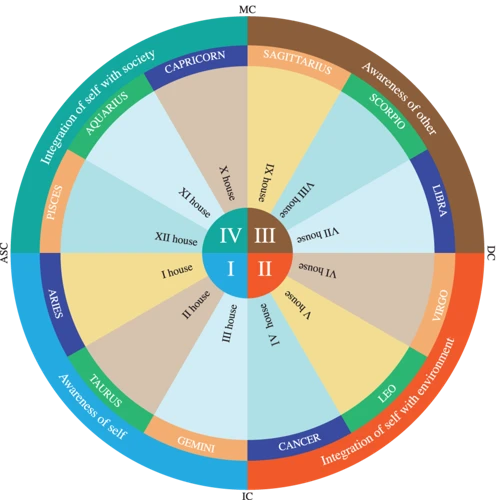
When it comes to analyzing the Sun, Moon, and Rising signs, it’s important to understand how these signs interact and influence each other. While each sign has its own unique qualities and significance, they also work together to form a comprehensive astrological profile.
1. Interdependency and Relationship between Signs: The Sun, Moon, and Rising signs complement each other and provide a more holistic view of an individual’s personality. The Sun sign represents the core essence and conscious mind, while the Moon sign reflects the emotional landscape and subconscious desires. The Rising sign adds another layer by influencing the outward appearance and first impressions. These three signs work in harmony, shaping different aspects of an individual’s identity.
2. Balancing the Influences: Identifying Dominant Signs: In astrology, some signs may have a stronger influence on a person’s overall character. By comparing the Sun, Moon, and Rising signs, astrologers can identify which signs are dominant and shape a person’s behavior and traits. For example, someone with a Leo Sun sign, Cancer Moon sign, and Aries Rising sign may exhibit qualities associated with all three signs but might display more dominant traits of Leo due to its placement as the Sun sign.
To compare and analyze the Sun, Moon, and Rising signs, astrologers examine the precise degrees and placements of these signs in an individual’s birth chart. They consider the aspects, or the angles formed between these signs and other planets, which further enhance or modify their influence. By understanding the interplay between these signs, astrologers can provide a more nuanced and accurate interpretation of an individual’s astrological makeup.
Comparing the Sun, Moon, and Rising signs allows for a comprehensive exploration of an individual’s personality, motivations, and life path. It provides valuable insights into how these signs manifest in various areas of life, such as relationships, career choices, and personal growth. Understanding the intricate dynamics between the Sun, Moon, and Rising signs contributes to a deeper understanding of ourselves and others, guiding us towards self-awareness and personal development.
1. Interdependency and Relationship between Signs
When analyzing the interdependency and relationship between the Sun, Moon, and Rising signs, it becomes evident that these three components work together to create a complex and multifaceted personality. The Sun sign represents the core essence and ego of an individual, while the Moon sign reflects their emotional landscape and subconscious mind. The Rising sign (Ascendant) is the mask an individual wears and their initial impression on others. Understanding the interplay between these signs is crucial for a holistic analysis of an individual’s astrological profile.
The Sun sign lays the foundation for an individual’s personality traits and defines their primary motivations, desires, and aspirations. It provides insights into their core values and what drives them on a deeper level. The Moon sign, on the other hand, influences an individual’s emotions, instincts, and nurturing abilities. It reveals their innermost needs, preferences, and reactions to different situations. The Rising sign, positioned at the eastern horizon during the time of birth, determines the outer persona, appearance, and how an individual presents themselves to the world.
While each sign holds significance on its own, it is their interdependency and relationship that add layers of complexity to an individual’s character. For instance, a person with a Leo Sun sign, known for their confidence, charisma, and desire for recognition, may have a Pisces Moon sign, which adds emotional sensitivity and intuition to their personality. This combination can result in a complex blend of ambition and empathy, where the individual is driven to succeed but also deeply compassionate towards others.
Similarly, the Rising sign further enhances and modifies the expression of the Sun and Moon signs. It can either amplify the qualities of the Sun sign or add a different flavor to the overall personality. For example, a Gemini Sun sign with a Cancer Rising sign may exhibit the intellectual curiosity and versatility of Gemini, but with a nurturing and empathetic approach that is characteristic of Cancer.
In analyzing the interdependency of these signs, it is important to consider the elements and qualities associated with each. The elements (fire, earth, air, and water) bring different energies and temperaments, while the qualities (cardinal, fixed, and mutable) determine modes of expression and adaptability. A well-rounded analysis takes into account all these factors to provide a comprehensive understanding of an individual’s astrological makeup.
The interdependency and relationship between the Sun, Moon, and Rising signs shape and define an individual’s personality. They work together to create a unique blend of motivations, emotions, and outward appearances. By analyzing these signs collectively, astrologers can unlock a deeper understanding of an individual’s character and provide valuable insights into their relationships, career choices, and personal growth.
2. Balancing the Influences: Identifying Dominant Signs
In astrology, each individual’s natal chart is a unique combination of their Sun, Moon, and Rising signs, along with the positions of other planets. These different signs and planetary positions contribute to shaping a person’s personality and life experiences. However, it’s common for some signs to have a stronger influence than others, creating a dominant energy in an individual’s astrological makeup. Identifying the dominant signs is essential in understanding how they shape a person’s overall character. One way to determine dominant signs is by looking at the elements and modalities present in the chart. The elements, which are fire, earth, air, and water, represent different energies and qualities. If an individual has a majority of their planets in one particular element, it indicates a dominant sign emphasizing those qualities. For example, someone with many planets in fire signs (Aries, Leo, Sagittarius) may have a dominant fiery energy, characterized by enthusiasm, impulsiveness, and a bold approach to life. Similarly, the modalities (cardinal, fixed, mutable) represent different energies and tendencies in how a person takes action. If a majority of the planets fall into one modality, it signifies a dominant sign reflecting those qualities. For instance, individuals with several planets in fixed signs (Taurus, Leo, Scorpio, Aquarius) are known for their determination, stability, and resistance to change. Identifying the dominant signs helps astrologers and individuals gain a deeper understanding of the core aspects of their personality and behavior patterns. It allows them to find a balance between the different energies present in their chart and make the most of their strengths while working on areas that may need development. By recognizing the dominant signs, individuals can navigate their lives with greater self-awareness and make decisions that align with their inherent nature.
Conclusion

In conclusion, the Sun, Moon, and Rising signs are essential components of astrology that provide valuable insights into a person’s astrological profile. The Sun sign represents the core essence and identity, shedding light on an individual’s traits and characteristics. The Moon sign delves into emotions, instincts, and the inner self, providing a deeper understanding of one’s emotional needs and reactions. The Rising sign reflects outward appearance and the first impression one makes on others, highlighting their behavior and style of communication. By analyzing these signs in combination with the positions of other planets and aspects in a natal chart, astrologers can offer detailed interpretations and predictions regarding various aspects of an individual’s life. It is important to remember that astrology should be viewed as a tool for self-reflection and personal growth, rather than a definitive guide to one’s destiny. Embracing the complexities of astrology can provide valuable insights and help individuals navigate their lives with a deeper understanding of themselves and those around them. So, take a moment to explore the wonders of astrology and discover the unique magic that lies within your Sun, Moon, and Rising signs.
Frequently Asked Questions

1. What is the significance of the Sun, Moon, and Rising signs in astrology?
The Sun, Moon, and Rising signs are three essential components of a person’s astrological profile. They provide valuable insights into an individual’s personality traits, emotions, and outward appearance.
2. How is the Sun sign determined?
The Sun sign is determined by the position of the Sun at the exact time and location of a person’s birth. It represents the core essence and character of an individual.
3. What does the Moon sign represent?
The Moon sign represents an individual’s emotions, instincts, and inner self. It reflects how they feel and express their emotions.
4. How does the Rising sign influence our outward appearance?
The Rising sign, also known as the Ascendant, determines our outward appearance and the first impression we make on others. It represents the mask we wear in social situations.
5. Do the Sun, Moon, and Rising signs have equal importance?
While all three signs are important, the Sun sign is often considered the most significant as it represents the individual’s core essence. However, the Moon and Rising signs also contribute valuable insights.
6. Can the Sun, Moon, and Rising signs be different?
Yes, it is possible for an individual to have different Sun, Moon, and Rising signs. This occurs when they were born at different times, resulting in variations in the placements of these celestial bodies.
7. How do the signs interact with each other in a natal chart?
In a natal chart, the signs interact with each other through aspects, which are specific angular relationships between planets. These aspects can influence how the Sun, Moon, and Rising signs express themselves in different areas of life.
8. Can the Sun, Moon, and Rising signs change over time?
No, the Sun, Moon, and Rising signs remain constant throughout a person’s life. However, the positions of other planets in their birth chart may change, leading to shifts in astrological influences.
9. How can understanding the Sun, Moon, and Rising signs enhance self-awareness?
Understanding the Sun, Moon, and Rising signs allows individuals to gain insights into their strengths, weaknesses, and emotional inclinations. This self-awareness can help them navigate relationships, career choices, and personal growth.
10. Can astrology accurately predict future events?
Astrology provides insights into the energies present at a given time but does not provide absolute predictions. It is a tool for understanding potential influences and tendencies, allowing individuals to make informed decisions and choices.
References
Frequently Asked Questions

1. What is the significance of the Sun, Moon, and Rising signs in astrology?
The Sun, Moon, and Rising signs are three crucial elements in a person’s natal chart that offer valuable insights into their personality, emotions, and outward demeanor.
2. How do the Sun, Moon, and Rising signs differ from each other?
The Sun sign represents your core essence and ego, the Moon sign reflects your emotional nature and instincts, and the Rising sign showcases your outward appearance and how others perceive you.
3. Can someone have different Zodiac signs for their Sun, Moon, and Rising signs?
Yes, it is entirely possible for individuals to have different Zodiac signs for their Sun, Moon, and Rising signs. Each sign represents different aspects of their personality and can vary based on their birth date, time, and location.
4. How can I determine my Sun, Moon, and Rising signs?
To determine your Sun sign, you need your birth date. Your Moon sign requires your birth date, time, and location. Lastly, your Rising sign can be found using your birth date, time, location, and the exact degree of the zodiac at the time of your birth.
5. What are some common traits associated with each Sun sign?
Each Sun sign has its unique characteristics. For example, Aries is known for their assertiveness and ambition, while Taurus is associated with stability and practicality. Gemini represents adaptability and curiosity, and Cancer signifies nurturing and compassion.
6. How does the Moon sign affect a person’s emotions?
The Moon sign plays a significant role in shaping an individual’s emotional nature. It influences their moods, instincts, and intuitive abilities. It provides insights into how they process and express their emotions.
7. Can the Rising sign mask or alter the traits of the Sun and Moon signs?
Yes, the Rising sign can sometimes overshadow or modify the traits of the Sun and Moon signs. It represents the mask we wear and the impression we give to the world. However, the underlying core of the Sun and Moon signs remains unchanged.
8. How do the Sun, Moon, and Rising signs work together?
The Sun, Moon, and Rising signs work in harmony to create a comprehensive picture of an individual’s personality. The Sun sign provides the foundation, the Moon sign adds depth and emotional nuances, and the Rising sign determines the outward presentation.
9. Are there any dominant signs among the Sun, Moon, and Rising signs?
Yes, it is possible to have dominant signs among the Sun, Moon, and Rising signs. The dominance can be determined by the placement of the signs in the natal chart and their overall influence on the individual’s personality and life experiences.
10. How can understanding the Sun, Moon, and Rising signs improve relationships?
Understanding the Sun, Moon, and Rising signs can enhance relationships by providing insights into individuals’ unique traits, emotional needs, and interpersonal dynamics. It promotes empathy, communication, and a deeper understanding of one another.

